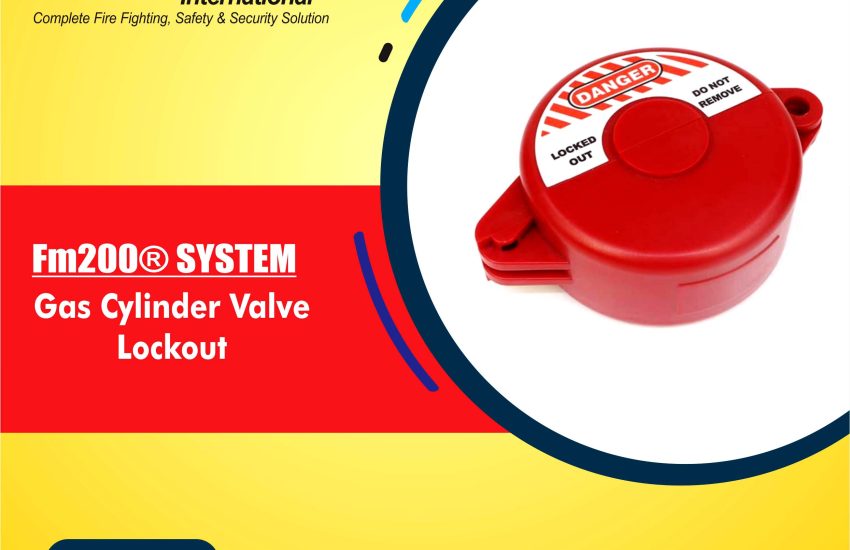Gas Cylinder Valve Lockout is a vital safety device that prevents accidental release or misuse of gas from cylinders. In industries such as fire protection, medical facilities, and manufacturing, it’s crucial to ensure that gas cylinders remain securely closed when not in use. This guide will provide detailed information about gas cylinder valve lockouts, including their features, benefits, and how to choose the right one.
What is a Gas Cylinder Valve Lockout?
A Gas Cylinder Valve Lockout is a security device that fits over the valve of a gas cylinder. It locks the valve in place, preventing unauthorized access and accidental gas release. These devices are essential in environments where safety is a priority, including laboratories, fire suppression systems, industrial settings, and medical facilities.
Key Features of Gas Cylinder Valve Lockouts
- Durable Construction: Gas cylinder valve lockouts often use high-strength plastic or metal materials. These materials ensure the lockouts withstand harsh environments.
- Compatibility: These devices fit a wide range of gas cylinder valve types. They work with cylinders like oxygen, nitrogen, and carbon dioxide tanks.
- Easy Installation: Installing a gas cylinder valve lockout is simple and does not require specialized tools. Just place the lockout over the valve and secure it.
- Locking Mechanism: The device includes a feature that accommodates padlocks or safety locks. This ensures unauthorized personnel cannot open the valve.
- Visible Warning: Many gas cylinder valve lockouts include brightly colored warning labels. These labels make it easy for workers to identify locked-out cylinders.
Why Gas Cylinder Valve Lockouts Are Important
- Prevention of Accidental Gas Release: Even small accidental gas releases can be dangerous. Locking the valve prevents this risk.
- Compliance with Safety Regulations: Regulatory bodies like OSHA (Occupational Safety and Health Administration) and NFPA (National Fire Protection Association) require safety measures for handling gas cylinders. Lockouts ensure compliance with these standards.
- Control Over Access: Lockouts help control who has access to gas cylinders. Only authorized personnel can open the valves, reducing the chances of tampering or misuse.
- Worker Safety: Locking gas cylinders protects workers from accidents caused by mishandling or unauthorized gas release.
Benefits of Using a Gas Cylinder Valve Lockout
- Enhanced Safety: Gas cylinder valve lockouts prevent accidental gas release, ensuring that valves remain securely closed, which improves safety.
- Improved Compliance: These lockouts help businesses meet safety standards, which reduces the risk of fines or legal issues.
- Ease of Use: Lockouts are simple to install and operate. Most models do not require advanced training or tools, making them efficient for any workplace.
- Prevention of Unauthorized Access: Lockouts prevent unauthorized personnel from opening the cylinder valve, ensuring safety.
- Cost-Effective: Gas cylinder valve lockouts offer an affordable safety solution, reducing the risks of accidents and minimizing insurance claims.
Types of Gas Cylinder Valve Lockouts
- Single Cylinder Valve Lockouts: These lockouts secure one gas cylinder valve at a time. They are ideal for smaller operations or where cylinders are used individually.
- Multi-Cylinder Valve Lockouts: These devices secure multiple cylinders simultaneously, making them suitable for larger operations with many cylinders.
- Universal Cylinder Valve Lockouts: Universal lockouts fit most gas cylinders, offering flexibility for businesses using different cylinder types.
- Compact Cylinder Valve Lockouts: These smaller versions are portable, ideal for environments with limited space or smaller cylinders.
How to Choose the Right Gas Cylinder Valve Lockout
- Cylinder Type: Make sure the lockout is compatible with the type of cylinder you use. Some lockouts fit specific valve types.
- Material: Choose a lockout made from durable materials like steel or high-strength plastic to ensure it lasts.
- Locking Mechanism: Ensure the lockout accommodates padlocks or safety locks to provide additional security.
- Ease of Installation: Choose a lockout that installs quickly without requiring specialized tools. This will save time and improve efficiency.
- Compliance Needs: Verify that the lockout meets safety regulations such as those set by OSHA or NFPA.
Installation of Gas Cylinder Valve Lockouts
- Position the Lockout: Place the lockout over the gas cylinder valve, ensuring it fits securely.
- Secure the Lockout: Insert a padlock or safety lock to secure the lockout. This step prevents unauthorized access.
- Check for Proper Fit: Ensure the lockout is securely attached and does not interfere with the cylinder’s function.
- Regular Inspections: Periodically check the lockout to ensure it remains in proper working condition. This helps maintain safety and compliance.
Conclusion
Gas Cylinder Valve Lockout is a crucial safety device that ensures gas cylinders remain securely closed. It prevents accidental gas releases, helps meet safety regulations, and protects workers from potential hazards. By selecting the right lockout device and installing it properly, businesses can significantly enhance safety practices and reduce the risks associated with gas cylinder use.


